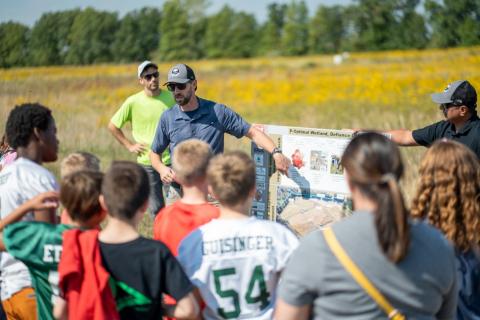On a warm and sunny day in September, 300 sixth graders from three schools near Defiance, Ohio joined a team from the U.S. Army Corps of Engineers, Buffalo District, the City of Defiance, the Defiance Soil and Water Conservation District, General Motors, and the U.S. Geological Survey to experience a hands-on tour of the GLRI-funded Phosphorus Optimal Wetland Demonstration Project.
This opportunity is an example of how educators can connect today’s youth to real science that impacts the world around them. The 10-acre wetland is designed to reduce levels of phosphorus, a key driver of harmful algal blooms in western Lake Erie.
As students toured the site, they learned about the different functions of the wetland, used microscopes to get a closer look at insects and other objects, and measured the pH of water drawn from the project. Providing students this opportunity expands the classroom, showing students how what they are learning is applied and making them aware of public service job opportunities.
“Restoring and improving the health of the Great Lakes takes hard work and innovation in the actions we take today for the benefit of our future generations,” said Tim Noon, USACE Buffalo District project manager. “It was a great day and a meaningful experience to partner with those who will help reduce harmful algal blooms in the future.”



